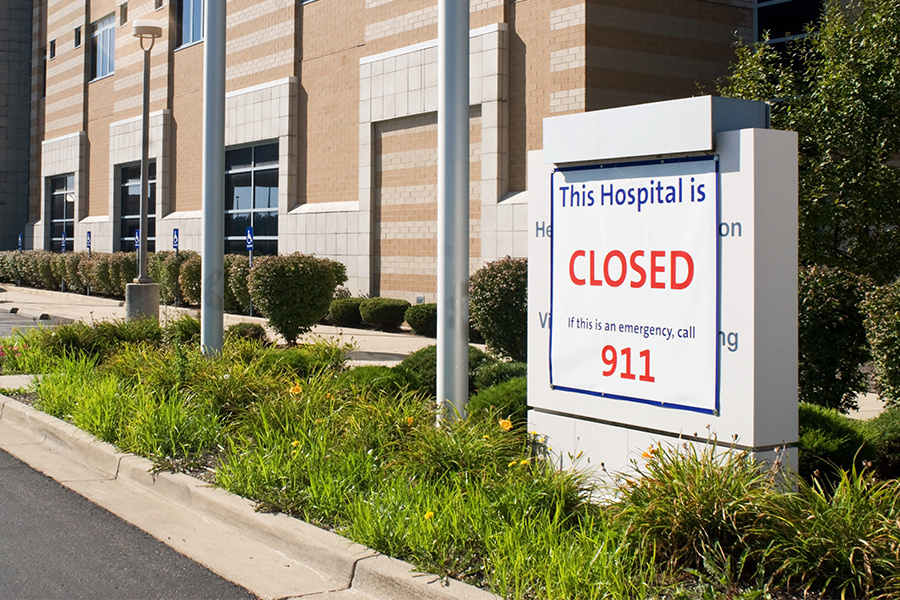Rural Hospital Closures Fuel Rising Demand and Costs at Nearby Hospitals
March 7, 2023

(Shutterstock, Susan Law Cain)
New research reveals that rural hospital closures nationwide are compromising the ability of nearby hospitals to care for the resulting increase in patients while maintaining their financial well-being. This ripple effect further jeopardizes access to health care in rural communities.
In a study funded by NCATS’ Clinical and Translational Science Awards (CTSA) Program, researchers at Penn State University measured how closures affect surrounding hospitals that fill the health care gaps for rural communities. Since 2005, 180 rural U.S. hospitals have closed, and nearly 1,000 more hospitals face similar fates. Hospital closures are an additional challenge for rural communities already coping with population loss, economic decline, and rising rates of suicide and substance use.
The researchers used a University of North Carolina database to identify rural U.S. hospitals with more than 25 beds that closed between 2005 and 2016. They looked at how rural hospital closures affected surrounding hospitals within 30 miles. The study authors compared inpatient admissions and emergency department (ED) visits at surrounding hospitals 2 years before and after nearby hospital closures. They also looked at overall cost increases at surrounding hospitals.
The study included 53 rural hospitals that closed and 93 nearby hospitals that remained open. Of the rural hospitals that closed, 66% were in the South and 21% were in Appalachia.
The research showed that rural hospital closures put added strain on surrounding hospitals’ EDs and their inpatient units. Two years prior to a nearby hospital’s closure, average visits to the EDs of surrounding hospitals rose 3.6%. Two years after closure, however, average ED visits of surrounding hospitals climbed 10.2%. Average inpatient admissions fell 5.7% in the 2 years prior to closure. Two years later, however, admissions were up 1.2%.
The spillover also increased surrounding hospitals’ costs. Average costs per year rose by $1.4 million at for-profit hospitals, $2.1 million at government hospitals and $7.3 million at nonprofit hospitals.
Researchers caution that these findings may point to a “daunting” future for rural health care. “This research confirmed a problem for the health care field that many already suspected. The question now becomes how researchers and policymakers can develop solutions to help bystander hospitals handle increased volume,” said Daniel George, associate professor of humanities and public health sciences at Penn State University.
Learn more about the findings in the Journal of Hospital Medicine.


